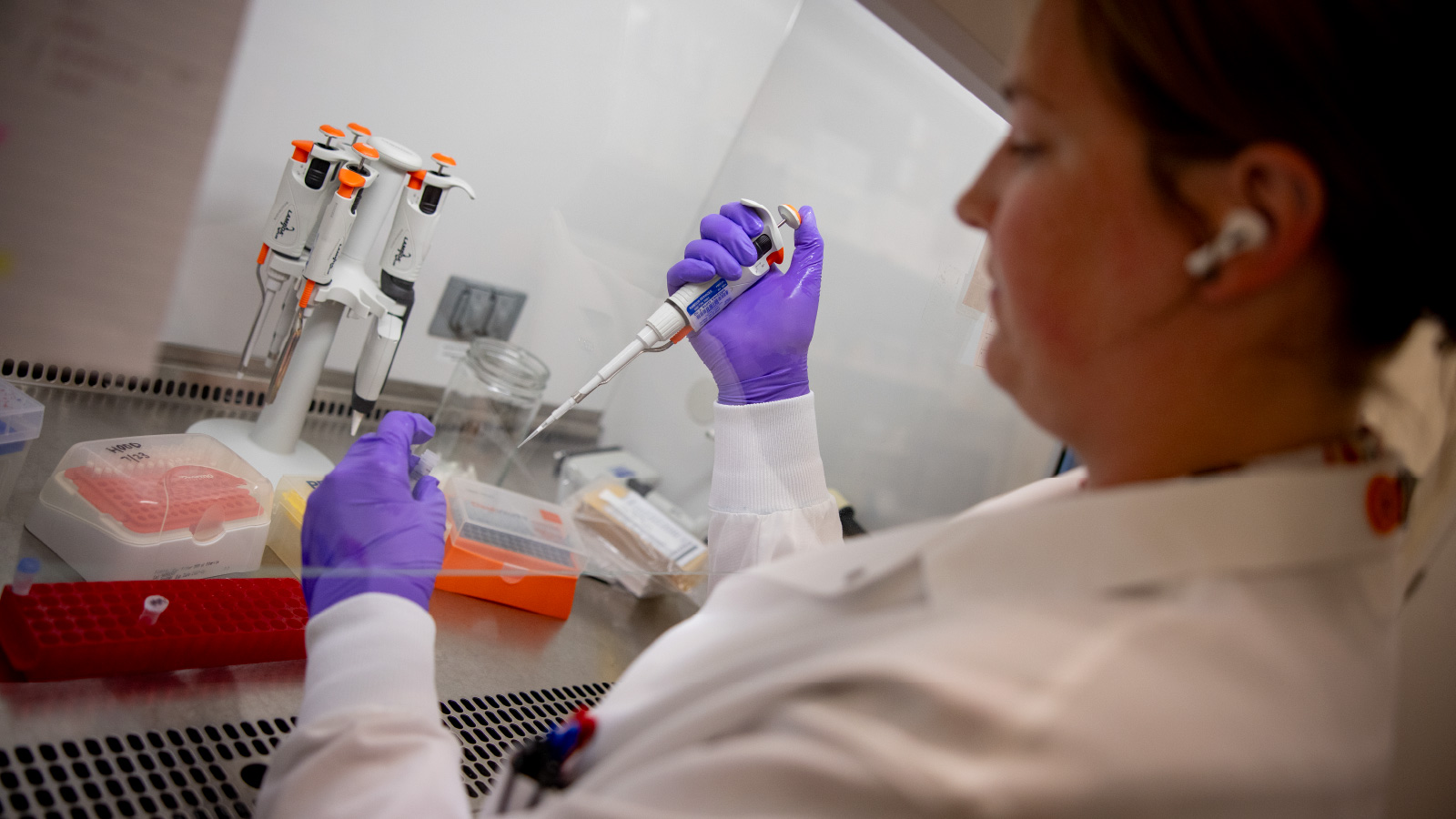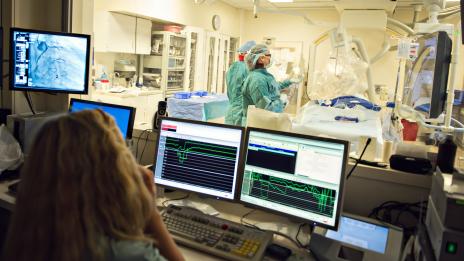By Anissa Gabbara | Photos by Marc-Grégor Campredon
Every year, sepsis claims the lives of about 11 million people worldwide, according to the 2020 Global Burden of Disease Study.
Thanks to the Frankel Innovation Initiative, a $20 million fund supporting the research and development of lifesaving therapies and technologies at Michigan Medicine, two U‑M researchers are going beyond the benchmark to better treat sepsis—and to save lives
The underlying problem
As physicians, Vishu Asthana (MedRes ’23) and J. Scott VanEpps know firsthand the signs of a septic patient—fever, fast heart rate, low blood pressure—which usually result from a bacterial infection and call for emergency treatment. The challenge? To deliver critical antibiotic treatment early on without knowing which ones to give.
“When we encounter these patients, we don't know what's causing the infection or what bacteria it is, so what we have to do is give these heavy-hitting, broad-spectrum antibiotics to make sure we cover all possibilities,” said Asthana, an internal medicine physician at Michigan Medicine.
Covering all bases with broad-spectrum antibiotics seems like the most sound solution. But using them indiscriminately can lead to the emergence of superbugs—pathogens that become resistant to antibiotics and thus can increase patients’ risk of mortality.
In the lab
Identifying the type of bug in order to provide the right antibiotic requires a savvy approach. And together, Asthana and VanEpps are working toward the potential holy grail of sepsis treatment with the development of the Rapid Response, or R², system.
Aiming to improve outcomes in septic patients as well as time and cost efficiency in treatment, Asthana designed the R² system using a test that produces a unique signature for every bacteria—almost like a fingerprint. This innovative approach helps detect close to 200 pathogens within one to three hours; current tests detect significantly fewer pathogens and results can take up to three days. Plus, it’s relatively cheaper.
“People have been trying to address this for 20 to 30 years, and it hasn't been working. So it's definitely a hard problem, but we're hopeful,” Asthana said
Bench to bedside
As VanEpps noted, sepsis is not just one disease; it’s the body’s extreme response to an infection that can stem from various organs and cause a wide array of symptoms that require different types of treatment. But U‑M is taking a multidisciplinary, synergistic approach to finding lifesaving solutions, from critical care doctors and nurses treating patients and scientists developing new therapies to engineers developing time-saving devices and computer scientists putting data to use.
“I think what Michigan does better than any other place that I'm aware of is break down the barriers to all of those different people working together, and one of the success stories of that is this project that Vishu and I are working on,” said VanEpps, associate professor of emergency medicine at the Medical School and associate professor of macromolecular sciences and engineering at the College of Engineering.
It is this kind of collaborative culture that ignites innovation, moving Asthana and VanEpps’ groundbreaking research from the bench to the bedside. And thanks to the Frankel Innovation Initiative Scientific Advisory Committee, the research partners are receiving the guidance they need from scientists and business experts from around the globe.
“They've been providing us suggestions, not just on the science, but also on the entrepreneurial side, with the hopes of this eventually becoming a commercial product that can help patients instead of just sitting in the lab,” Asthana said.
Making headway
VanEpps, who is also associate director of the Max Henry Weil Institute for Critical Care Research and Innovation, and Asthana are optimistic about advancing sepsis research, crediting the role of philanthropy for speeding up the process. Made possible by a gift from the Maxine and Stuart Frankel Foundation, the initiative is restoring hope that innovative research will accelerate patient impact.
“Philanthropic support is crucial in this setting where there is a dearth of funding, and I can say for sure that we are much further along in the process because of the Frankel Innovation Initiative,” VanEpps said.
“Sepsis is a huge problem, and I think because people have been working on this for so long, they get jaded about the problem. But U‑M is not like that,” Asthana said. “They see the value in the research and new and upcoming ideas, and they support you. And I think in doing so, they're bringing this innovation to not only the United States, but to the world, in hopes of improving patient outcomes.”








